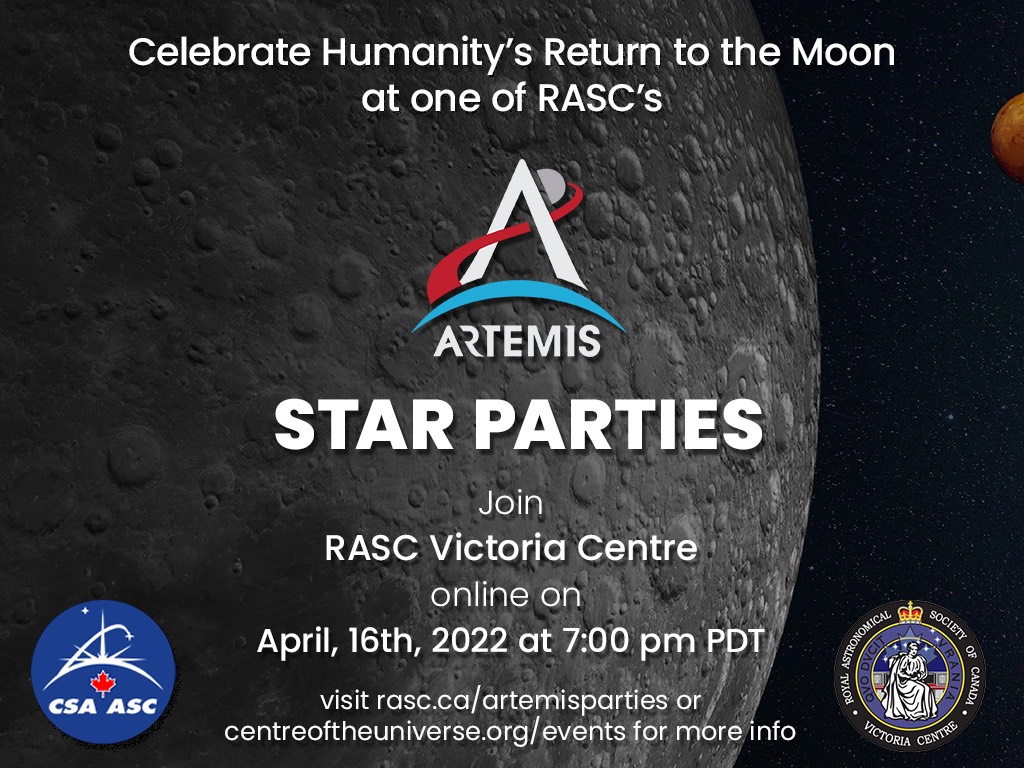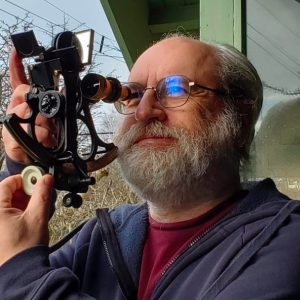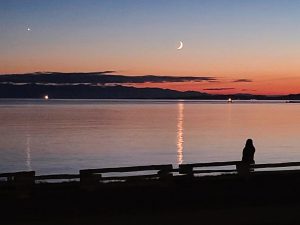Transcript video of the meeting
Chris Boar is a self professed Apollo program space nerd, having met 12 Apollo astronauts including 4 moonwalkers. This presentation is about his visit to Johnson Space Center in Houston back in November 2019, interspersed with tales of meeting the Apollo Astronauts. Chris attended the JSC Level 9 VIP tour, which includes visits to NASA’s Neutral Buoyancy Lab, where current astronauts train for spacewalks. Also visiting “Building 9” containing mockups of the International Space Station, Soyuz, and SpaceX hardware. And finally visiting the current ISS Mission Control Center, and personal highlight of the tour for Chris, stepping inside the recently restored historic Apollo Mission Control room, a designated US National historic landmark.

Chris Boar is the President of the Nanaimo Astronomy Society and an avid Apollo space nerd along with being a keen astrophotographer. Chris is a full time professional photographer living in Nanaimo shooting weddings and real estate.
- 2019 visit to Johnson Space Center in Houston
- VIP Level 9 Tour – 4-5 hours
- Lunar Exploration Module (LEM)
- Neutral Buoyancy Lab
- Met Micheal Collins: Gemini 10, Apollo 11
- ISS Mission Control
- Saturn V rocket with F1 engines
- Apollo 8 mission
- Jim Lovell – Gemini 7, 12, Apollo 8, 13
- Space Vehicle Mockup building – ISS, SpaceX, Soyuz
- Apollo 9 mission
- Alan Bean, Apollo 12 LMP, Skylab II
- 2016 Spacefest
- Restored historic Apollo Mission Control room – all original and working consoles
- Apollo 13 mission – Jim Lovell, Fred Haise, Jack Swigert
- Apollo 15 mission – Dave Scott, LEM
- Apollo 16 mission
- Apollo 17 mission – Gene Cernan, the last man on the Moon
- Q&A
- Space Hipsters – Facebook group
Members’ Reports
- Edmonton Astrophotography – Dave Robinson
- M81, M82, NGC 2976, NGC 3077, other galaxies – Arnold Rivera
- M64 – Tom Owen
- Astronomy Day – May 7th – David Lee
- Royal BC Museum – 10AM – 3PM
- Most activity areas will resume with this in-person public event
- Speakers in the Newcombe Auditorium
- Cross-Canada Lunar/Artemis Webinar – RASC National – midday
- Live feed from Victoria weather permitting
- Static video of lunar observing needs to be created as a backup in case of poor weather – contact David Lee
- Public event – DAO on Observatory Hill – evening
- Royal BC Museum – 10AM – 3PM
- Volunteers List – Marjie Welchframe
- Need more volunteers for various events Victoria Centre participates in
- Have about 25 volunteers already
- Telescope clinic for new observers – Dave Robinson
- Artemis Lunar Star Party – April 16 7-9PM – Lauri Roche
- Co-hosted by RASC and FDAO
- Ask a selenophile – Randy Enkin
- Speaker – Chris Gainor
- Astronomy books to give away – contact Bill Weir
- Large star atlas, and more
- Astronomy & space exploration books – recommended by Martin Gisborne
- Fundamentals – Then Keys to Reality – Frank Wilczek
- Black Hole Survival Guide – Janna Levin
- A Man On The Moon – Andrew Chaikin
- Moon Dust – Andrew Smith
- Carrying The Fire – Michael Collins
- The Last Man on the Moon – Gene Cernan
- Apollo 13 – Jim Lovell and Jeffrey Kluger
- Henri Van Bentum death – Lauri Roche, Jim Hesser
- Natasha – Henri’s wife, assisted Victoria Centre with International Year of Astronomy 2009
- Letter of condolence to be sent to Natasha on behalf of Victoria Centre
- Astronomy Cafe – TV to be installed tomorrow in our new room at FGCA – Chris Purse
- No Astronomy Cafe next week due to the Easter weekend – see everyone on April 25th



